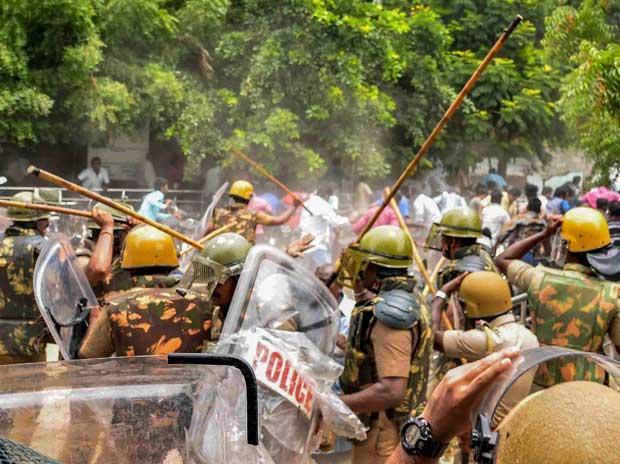About seven years ago, the chief executive of a multinational company had said his company chose Tamil Nadu because the state was peaceful and it maintained the law-and-order situation well. Today, after a spate of protests and violence in the state, his opinion has changed. A Tamil Nadu non-native, he once considered settling down here for good, but now he is looking for an opportunity to leave.
This is not an isolated instance; many of the industrial units in Tamil Nadu, mainly looking for social harmony, would now prefer expanding outside the state. Already struggling to attract investments despite a good business ecosystem, the state might find this as a major blow, says the CEO of a company that is investing over Rs 8-10 billion in expanding outside of Tamil Nadu.
Tamil Nadu, a hotbed for public agitations in recent times, has turned into the most restive of Indian states. According to official data, the state reported 20,450 agitations in 2015. Though the total number of protests was 500 less than the previous year, the state led the country on this count, with Punjab (13,089), Uttarakhand (10,477) and Delhi (10,039) next in line. The number of agitations organised by political parties was 8,312, which was, again, the highest in India. Those organised by government employees, labour organisations, students and communal groups were next to political protests in terms of their numbers.
In 2016, the state maintained its position, with an average 47 protests per day – 25 per cent of all agitations across the country, according to reports quoting a Bureau of Police Research and Development (BP&RD) report.
Tamil Nadu has a history of high-profile protests – from the pre-Independence era’s anti-Hindi agitations, which still continue in different pockets, to public expression of solidarity with the Tamils in Sri Lanka, pro-Jallikattu, anti-NEET (national eligibility and entrance test), bus fare hike, farm loan waiver, and Cauvery water-related issues. While these were short, they created flutter and literally brought many parts of the state, including capital Chennai, to a grinding halt.
There also were long protests in the coastal village of Idinthakarai against the expansion of nuclear power plants in Kudankulam, and those against GAIL's gas pipeline project, methane projects, hydrocarbon projects and neutrino scheme, in the past year or two.
While Sterlite issue has been going on for over two decades, the situation now has become very serious, having claimed nearly 12 lives and leaving hundreds of others injured in the past 48 hours. The protesters want the factory to close as they fear it is hazardous. Surprisingly, the state government and the Opposition are on the same page.
Despite the state having high literacy, things on the ground are getting worse, as half of the protests taking place in Tamil Nadu are political in nature, say experts.
They add that one of the main reasons for the state of affairs is that governance in Tamil Nadu is not democratic enough. It’s not only ministers, even the bureaucracy and government machinery do not respond to peoples’ issues in time, forcing them to protest.
A few members of industry who did not wish to be named said that the government was not doing anything meaningful for industry which is weakening overall sentiment among businesses in the state.
Another issue facing the state is that there are several small parties that lead agitations to make their presence felt.
While Dravidians have been ruling the state for over five decades, it has been at the forefront of attracting investors, thanks to its natural ecosystem, mainly in the form of human resource and infrastructure, including ports. But, with growing social unrest here and other states offering special incentives and packages for setting up industries, Tamil Nadu is not attracting investments.
At Rs 31.31 billion, Tamil Nadu received less than one per cent of the Rs 3.95 trillion investments attracted by all states in 2017 – reflecting the prevailing political stalemate and other issues facing the state.
From being the top investment destination a few years ago, the state has now slipped to the 12th spot among destinations for investment – it is placed lower than states like West Bengal and Odisha, and that should be a cause for concern.
